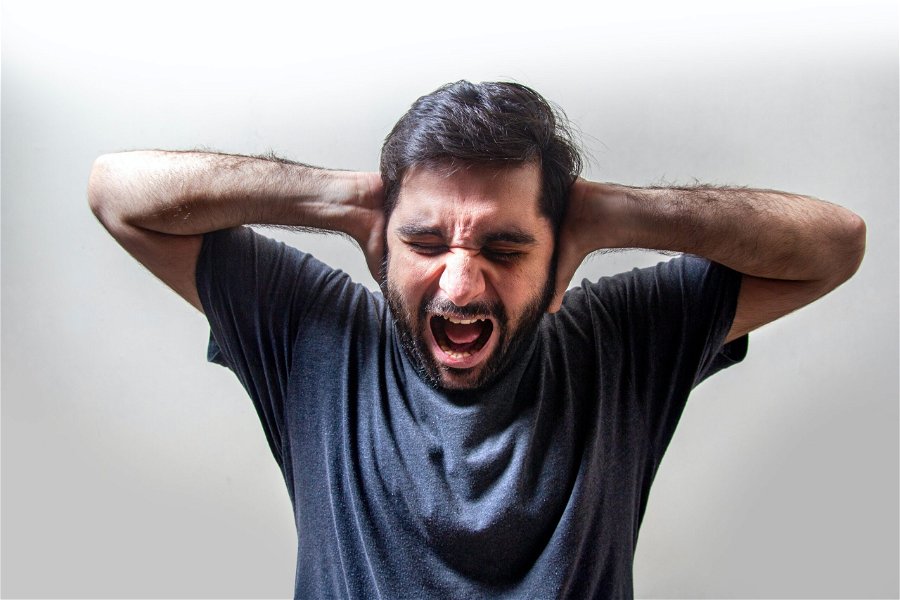Ways to deal with Panic Attack

When people hear the word “attack,” they often think of a physical assault. But there is another kind of attack that can be just as frightening and overwhelming: a panic attack. What is a panic attack, and how can someone get rid of it? This post will answer those questions and more.
Panic attacks are sudden, intense bouts of worry and dread. These attacks can cause physical symptoms, such as a racing heart, shortness of breath, and dizziness. Panic attacks can be debilitating, making it difficult to go about your normal activities. Fortunately, there are several ways to get rid of panic attacks.
This can help you if:
- You think you’ve had a panic attack.
- Want to know more about panic attack symptoms?
- Are looking for ways to control panic attacks.
- Or want to learn more about panic disorder.
Symptoms of a panic attack
Panic attacks are summary bouts of intense anxiety and fear. Panic disorder is diagnosed when a person experiences repeated panic attacks and become scared of having them.
Some physical symptoms of a panic attack include:
- Heart palpitations,
- Chest pain,
- Shortness of breath,
- Dizziness,
- Sweating and nausea.
Panic disorder sufferers often have panic attacks more frequently and for a longer duration. If you think you might be experiencing panic attacks, talk to your doctor and they can help determine if you suffer from panic disorder. If so, medication and therapy can provide treatment options.
Panic disorder is a natural, yet treatable condition that is often characterized by panic attacks. panic attacks are periods of intense fear or discomfort that come on suddenly and peak within minutes. Palpitations and chest discomfort are among the symptoms. While panic attacks can be extremely distressing, it is important to remember that they are not dangerous and that panic disorder is a treatable condition. If you think you may have a panic disorder, talk to your doctor. There are many things you can do to manage Panic Attacks and decrease their frequency. Breath exercises, relaxation techniques, and cognitive behavioral therapy are all effective treatments for panic disorder. Don’t suffer in silence – talk to your doctor today about panic disorder and how it can be treated.
Intense, paralyzing fear of multiple fears
The repeated occurrence of panic attacks can be highly distressing for the individual experiencing them. A panic episode may be only one occasion, but many people suffer from recurrent attacks. They can strike without notice and are highly distressing when the individual is unaware that his or her symptoms are due to anxiety.
When an individual has a panic attack, they may feel like there is no way out. It can be hard to know that it’s just because of your anxiety and not something more serious like a heart problem or stroke- so these individuals often go without treatment which leads to only worse symptoms in due course!
One of the most common symptoms of a panic attack is feeling trapped. This can lead to more severe issues, so it’s important not only to try escape routes but also to talk about how you’re doing with someone who understands what you are going through!
What is panic disorder, exactly?
- A panic attack does not always signal that you have a panic disorder.
- A panic disorder is characterized by frequent and unexpected panic episodes that severely disrupt a person’s life.
- If you have a panic disorder, you may worry about future panic attacks and change your behavior as a result.
Long-term consequences of panic attacks
If you frequently have unexpected panic attacks that come out of nowhere, are worried about having another one, and change your behavior because of the attacks (such as avoiding places where you had a panic attack before), then you may be suffering from the panic disorder.
Recurring panic attacks can be extremely distressing if you have a panic disorder. The recollection of the terrifying experience you went through during the episodes may have a detrimental influence on your self-esteem and cause disruptions in your daily routine. You might eventually develop one or more of the following symptoms.
1. Anticipatory anxiety
Even if you don’t have a panic attack, you may feel anxious and tense. Fear of fear is at the heart of this anxiety. The majority of the time, this “fear of fear” is there, which can be quite draining.
Sometimes we can’t help but feel anxious and tensed up in our bodies. Fear of fear is at the heart here, which often leads to a draining feeling for those that experience it on an everyday basis.
Anxiety is a feeling most people experience at some point in their lives. Most often, this “fear of fear” comes without warning and can be quite draining on you emotionally as well as physically because it takes up so much energy just trying not to let that anxiety take control!
2. Phobic avoidance
When you avoid certain areas or situations because you believe they caused a previous panic episode, this is known as “panic avoidance.” This might also happen if you avoid scenarios in which you would be unable to escape should you have a panic attack.
Avoiding certain places or situations can be a crucial step in fighting off panic attacks. If you have had previous negative experiences with these locations, it may trigger an episode and prevent one from happening again by simply not going there – this is known as “panic avoidance.” It could also happen if escape wasn’t possible due to physical limitations such as being too weak when experiencing debilitating nausea caused by elevation sickness while climbing mountains for example.
How to Get Through a Panic Attack?
If you are experiencing panic attacks, you may benefit from professional assistance. A certified therapist can help you understand and manage your anxiety. Taking this step can help you feel better and improve your quality of life. Learn more about panic attacks, panic disorders, and anxiety treatments here.
If you aren’t ready to see a professional, there are a few general anxiety-management strategies you can try. If you have an attack, there are things you can do right away to help calm yourself down.
Try out these strategies:
- Slow breathing can help reduce hyperventilation, which causes lightheadedness and chest tightness during a panic attack.
- Relaxation or progressive muscle relaxation exercises can help you reduce your overall anxiety and make you less susceptible to panic attacks.
Medication can help to reduce the frequency and severity of attacks. Therapy can teach you how to manage your anxiety and cope with panic disorder. Breathing exercises can also help to calm your body and mind during an attack. You can learn to control your panic attacks and live a healthy, happy life with the right treatment plan.
There are many ways to manage panic attacks. Medication and therapy can teach you how not only to cope with this mental illness but also live a healthy life full of happiness! exercises such as deep breathing will help bring your body back under control during an attack so that it doesn’t trigger future ones by causing excessive tension in muscles throughout one’s entire system.
The key takeaway here: when experiencing strong feelings like anxiety or stress (or any other difficult emotion) take time out for self-care because our physical health matters just as much if not more than it.
The Conclusion
It’s easy to forget that our physical health matters just as much, if not more than, our mental health. But when we’re feeling overwhelmed by difficult emotions like anxiety or stress, it’s crucial to take some time for self-care. Whether that means going for a walk outside, reading your favorite book, taking a hot bath, or spending time with friends and family, make sure you find something that helps you relax and recharge. Thanks for reading!



Recent Comments